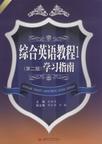综合英语教程1
出版时间:2010-9 出版社:西南交通大学出版社 作者:吴树奇 编 页数:229 字数:481000
前言
由黄源深、虞苏美为总主编,邹为诚为主编,高等教育出版社出版的《综合英语教程》(第二版)自出版发行以来,深受学者、专家们的好评,更受普通高校,特别是西部地区高校,英语专业低年级师生的喜爱。《教程》目前已在广大西部地区二本学校的基础英语课堂教学中被广泛使用。使用过该教材的师生在称赞其全新的编写模式和理念的同时,也深感面临语言能力和语用能力上的挑战。尤其对于那些来自农村地区及西部欠发达地区的学生来说,上述两大挑战的感受更为强烈。在此背景下,由吴树奇老师主编的教辅用书《综合英语教程1学习指南》(以下简称《指南》)即将付梓。我相信它的出版发行能有助于广大师生更好使用《教程l》,尤其是有助于应付上述两大挑战,在有限教学时间内保质、保量地完成《教程l》规定的教学任务。 纵观《指南1》书中的各大辅导板块,不难发现该书有以下几个特点。 一、针对性强 《指南1》基于教授《教程1》的一线教师几年来的教案,其辅导板块的设计、辅导内容的挑选、对讲解的难易程度的把握等均针对语言能力、语用能力不太强的西部二本学校英语专业学生及社会自学人士。对以上学生而言,做到“脱口而出”并非易事,《指南1》各单元的模拟对话可助学生缩短准备时间,稍作替换便可进入口语活动。这样可以逐步提高学生的语用能力。另外,《指南1》的第二、三部分提供的语言知识注解可以帮助学生打牢语言基础,逐步提高他们的语言能力。二、时代气息浓 《指南1》中编选的一些语言材料与时俱进。在辅导学生“说”的过程中,编者自然引出一些现实生活中正在发生的事,如“世博会”等。这有助于学生在学习语言的同时也能把握时代的“脉搏”,提高他们的学习积极性。 三、扩展型学习和传统型学习兼顾 《指南1》全书在辅导学生学习的过程中,较好地处理了扩展型学习和传统型学习的关系。首先,各单元有大量注释可扩大学生的知识面及应用能力。如“说”的部分给学生增补了国内一些名胜的英语表达;“读”的部分有大量的背景知识介绍和作品分析:“写”的部分所提供的范文涉及到除英、美之外的其它国家的文化风情。与此同时,《指南1》也注重传统的学习方式。如各单元的词汇注释可帮助学生全面地掌握这些重点单词和习惯用语,提高他们的语言悟性。 鉴于《指南1》的以上三大特点,我想该书一定会得到使用和学习《教程1》的师生的认可。诚然,《指南l》非名家大作,但对这些长期在一线教学的教师能积极参加教研、主动为学生着想本人表示钦佩和赞赏。虽然他们的作品中可能会有不足之处,有的问题可能考虑得还不够周密,鉴于他们积极的工作态度,这些都是可以谅解的。
内容概要
《综合英语教程l(第二版)学习指南》是《综合英语教程1(第二版)》(黄源深、虞苏美总主编,邹为诚主编)的教学辅助用书。 该书分“说、读、写”三大板块对《教程》的学习和使用进行辅导。在“说”板块,编者根据《教程》的交际要求,编写了两篇以上模拟对话(Made-up Conversations),对话反映的内容与时俱进。在“读”板块,编者重点对学生阅读能力的提高进行了“课文分析”(TextAnalysis)、“课文l背景注释和语言难点中英文解释”(Notes to the Text)、“语言点讲解”(Language Points in the Text)、“课文参考译文”(Reference Chinese Versions of the Texts)。在“写”板块,外籍参编人员根据《教程》要求就全书l 5个单元的句子写作给出了参考答案并写出了15篇以上短文(Sample Writing)。最后还提供了一些重要练习和有一定难度的练习的参考答案(Keys to the Exercises)。
书籍目录
Unit 1 My First Job Part I. Made-up C0nyersati0ns (Try to speak more) Part II. Reading Comprehension and Language Activities Part III. Reference Chinese Versions of the Texts Part IV. Sample Writing Part V. Keys to the ExercisesUnit 2 American Homes and British Homes Part I. Made-up Conversations (Try to speak more) Part II. Reading Comprehension and Language Activities Part III. Reference Chinese Versions of the Texts Part IV. Sample Writing Part V. Keys to the ExercisesUnit 3 What Is in a Name? Part I. Made-up Conversations (Try to speak more) Part II. Reading Comprehension and Language Activities Part III. Reference Chinese Versions of the Texts Part IV. Sample Writing Part V. Keys to the ExercisesUnit 4 Doing Away With the King's English Part I. Made-up Conversations (Try to speak more) Part II. Reading Comprehension and Language Activities Part III. Reference Chinese Versions of the Texts Part IV. Sample Writing Part V. Keys to the ExercisesUnit 5 England as Seen by Americans Part I. Made-up Conversations (Try to speak more) Part II. Reading Comprehension and Language Activities Part III. Reference Chinese Versions of the Texts Part IV. Sample Writing Part V. Keys to the ExercisesUnit 6 The First Day at School Part I. Made-up Conversations (Try to speak more) Part II. Reading Comprehension and Language Activities Part III. Reference Chinese Versions of the Texts Part IV. Sample Writing Part V. Keys to the ExercisesUnit 7 Computers Part I. Made-up Conversations (Try to speak more) Part II. Reading Comprehension and Language Activities Part III. Reference Chinese Versions of the Texts Part IV. Sample Writing Part V. Keys to the ExercisesUnit 8 The Missing Monarchs Part I. Made-up Conversations (Try to speak more) Part II. Reading Comprehension and Language Activities Part III. Reference Chinese Versions of the Texts Part IV. Sample Writing Part V. Keys to the ExercisesUnit 9 The Risks of Life Part I. Made-up Conversations (Try to speak more) Part II. Reading Comprehension and Language Activities Part III. Reference Chinese Versions of the Texts Part IV. Sample Wi:iting Part V. Keys to the ExercisesUnit 10 Words Can Give You Power Part I. Made-up Conversations (Try to speak more) Part II. Reading Comprehension and Language Activities Part III. Reference Chinese Versions of the Texts Part IV. Sample Wi:iting Part V. Keys to the ExercisesUnit 11 The Transaction Part I. Made-up Conversations (Try to speak more) Part II. Reading Comprehension and Language Activities Part III. Reference Chinese Versions of the Texts Part IV. Sample Writing Part V. Keys to the ExercisesUnit 12 The Message Behind the Smile Part I. Made-up Conversations (Try to speak more) Part II. Reading Comprehension and Language Activities Part III. Reference Chinese Versions of the Texts Part IV. Sample Writing Part V. Keys to the ExercisesUnit 13 A Delightful Village Part I. Made-up Conversations (Try to speak more) Part II. Reading Comprehension and Language Activities Part III. Reference Chinese Versions of the Texts Part IV. Sample Writing Part V. Keys to the ExercisesUnit 14 The Mystery of the White Gardenia Part I. Made-up Conversations (Try to speak more) Part II. Reading Comprehension and Language Activities Part III. Reference Chinese Versions of the Texts Part IV. Sample Writing Part V. Keys to the ExercisesUnit 15 For orAgainst Smoking in Public Places Part I. Made-up Conversations (Try to speak more) Part II. Reading Comprehension and Language Activities Part III. Reference Chinese Versions of the Texts Part IV. Sample Writing Part V. Keys to the ExercisesReferences
章节摘录
美国家庭 在美国,许多年轻人不和家人住一起,而是住在居民区的公寓楼,在这里大家差不多都是同龄人。年轻人常常一毕业就离家搬进合租公寓(如果能付得起钱的话)。他们自己做饭洗涮,偶尔周末也回家看看。 年轻已婚夫妇可能会搬到新兴的郊区,那里多数都有小孩。在乡间,有些人甚至自己盖房子住。 如果一家收入高,他们也许会搬至另一个郊区,那里房子更大,有两个甚至三个车库,一个游泳池,一个孩子们的游艺室,还有家庭可能需要的一切。 老年人通常不和他们的成年孩子住在一起;不少老人住在养老院。一些则住在专为老人建造的小城镇里,那里没有小孩,环境要安静些。 美国人总是在搬家。有些家庭每隔几年就要搬一次,每年有20%的美国人要搬家。舒茨夫妇开始一起生活可能是住在纽约的公寓房里,接下来住在新英格兰的一座白色木屋里,木屋只有小小的窗户,冬天能避寒。退休后他们搬到加利福尼亚州的一座阳光明媚的房子里,花园里种着柑桔树,大大的窗户将游泳池和大海美景尽收眼底。 英国家庭 英国人的家通常比美国人家小一些,但是,和美国人的家一样,老年人、年轻家庭和未婚青年通常不住在一起。 许多英国人喜欢老房子,这些房子通常要比新房子还贵。英国人也喜爱园艺,小镇小村里乃至郊外花园随处可见。一些花园很小,只有一棵树,几朵花,有些花园很大,有好多花儿,还有不少蔬菜和果树,足够一家人吃。 英国有1900万座房子一大房子和小房子,旧的村舍和新高层建筑,独家独院房子和公寓(美国人说apartment,英国人说flat) 在英国,半数家庭拥有自己的房子。他们的房子是一样的,都有两间或三间卧房在楼上,楼下一间起居室、一问餐厅和厨房,房子前后各有一个小花园。房主付款买房是先从“住房基金会”贷款,然后再每月一点点地偿还。 三分之一的英国人租借国有房子者被称为“市政房子”,不少这样的房子是公寓的但有些也是独家独院,有一个小花园,其他人则是向私人房东租房子。 英国人有大量各式各样的房子,但这还不够!有些年轻人结婚成家时可能很难找到一处房子。 ……
图书封面
评论、评分、阅读与下载
